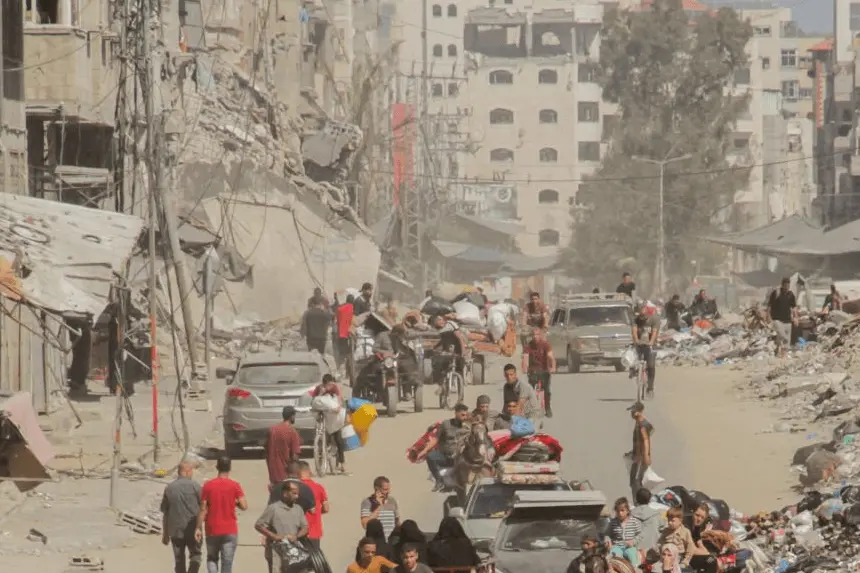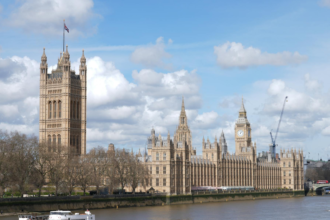Orders have been issued by the military of Israel that residents of the northern Gaza, including parts of Gaza City and Jabal, were to move south towards al-Mawasi. Such evacuations in the north of Gaza, in the background of increasing military actions, are indicative of a violent upsurge of this conflict. Almost 86 Palestinians have been reported dead in 24 hours, up to noon time on Sunday, by the Hamas-run health ministry in Gaza. Families consisting of displaced children as well as parents are being channeled into improvised safe zones even as attacks increase. In theory, this is supposedly based on strategic military necessity, but the situation on the ground is unraveling more and more as the strategy has claimed many civilian lives, and communities race to seek shelter under such adverse circumstances.
- What was the Reason behind the Orders to Evacuate the Northern Gaza?
- What have been the impacts of the Evacuations of the Northern Gaza on the Humanitarian Conditions?
- What is the Role of the International Actors?
- Who Will Be Directly Affected by the Northern Gaza Evacuations?
- Are the Aid Agencies able to respond in the face of Such Strain?
- What are the Connections between the Evacuations and the Hostage Diplomacy?
- What Do These Evacuations Indicate About the Greater Dynamics Of War?
- What are the Legal and moral aspects of these evacuations?
- Final Thought: Do Northern Gaza Evacuations Bode to Redirect This Conflict?
What was the Reason behind the Orders to Evacuate the Northern Gaza?
According to the Israel Defense Forces, such evacuations are necessary to isolate terrorists and to sabotage the Hamas military infrastructure. As it goes west into the highly populated areas of operation, the IDF claims that it minimizes the collateral risk by evacuating civilians. However, critical strike locations blend in regions already considered safe, like al‑Mawasi. Unfortunately, even the families who have been carted during evacuations have not been spared. There is a bright light to the tragedy of the restrictions of safe zones through the case of the Maarouf family of five people who were murdered as they slept. These evacuations in northern Gaza demonstrate the variability of a so-called safe status during war and how civilians continue to be in danger even when ordered under the auspices of protected movements. Here is the link to our article on Gaza Humanitarian Unity
What have been the impacts of the Evacuations of the Northern Gaza on the Humanitarian Conditions?
Evacuees are exposed to a devastating lack of shelter, food, water, and medical treatments once they arrive at the assigned regimes. The humanitarian aid networks are finding it hard to establish themselves as there has been a long Israeli aid blockade early in March that somewhat thawed out weeks later. Agencies such as UNRWA castigate alternative systems of distribution, like that of the Gaza Humanitarian Foundation, by saying that they are disorderly and not safe. Tasks carried out by medical teams are described as a scene of horror as citizens are injured in family tents with severe wounds, and the infrastructure is in a poor state. Though international pressure has been able to reopen some of the supply passages, the level of demand it has caused due to the evacuations in the north of Gaza is unmatched and heightens the demands of a more coordinated aid reaction.
What is the Role of the International Actors?
As Israel embarks on evacuation-related military ambitions, the ex-US President Donald Trump came out publicly to issue a call to ceasefire, arguing that Israel and Hamas were negotiating. In one of his recommendations, he argues that Israel ought to make the deal in Gaza and connect the release of hostages to an operational pause. The mediators of Qatar also indicate the increased efforts to establish a prisoner-for-cessation exchange. The recent ceasefire between Israel and Iran has been said to provide diplomatic impetus, though little has moved to practice. Such external diplomatic routes highlight international interests which increase the pressure in the northern Gaza evacuations as there is doubt of the way that military interests, humanitarian wants, and the process of negotiations can be restored in balance.
Who Will Be Directly Affected by the Northern Gaza Evacuations?
It is a high price that humans pay. The deaths of everyone in the Maarouf family have led to outrage and condemnation all over the world. Evacuations have been going on in Gaza as civil defense authorities keep reporting casualties almost every hour. In the meantime, health experts sound the alarm that the hospitals, working in conditions of supply and workforce shortages, are not capable of dealing with battle trauma and hyperthermia. Many evacuees, who barely had time to get out of their houses, are crowded into flimsy shelters, where regular access to sanitation and food is limited, to say the least, and the current heatwave only exacerbates the situation. The evacuations in the northern part of Gaza highlight the helplessness of ordinary people who are trapped between running out of their destroyed houses to places that are exposed to danger. Here is the link to our article on Gaza Hostage Rescue
Are the Aid Agencies able to respond in the face of Such Strain?
There are still impediments to emergency relief activities to come to the evacuated communities. Aid convoys have to face impaired roads, erratic access to borders, and uncoordinated arrangements with local authorities. Supply Stringency The fact that blockades were partially eased in March gave an opportunity for some supplies to go through, although it still continues to be politicized and unequal. Gaza Humanitarian Foundation, with the support of the US and Israeli partners, is highly contentious. UN organizations demand credible well-established delivery means. With the evacuations of the northern Gaza increasing, there is a dire need to have neutral, transparent evacuation operations to get food, water, and medicines to the refugees and avoid further havoc to already besieged zones.
What are the Connections between the Evacuations and the Hostage Diplomacy?
Some mediators and the Israeli security forces believe that the pressure to evacuate might make Hamas agree to a hostage‑release deal. According to Trump and other people in power, the violence is linked to the attempt at negotiations on rescue operations. Nevertheless, humanitarian activists emphasize that the civilian population is being played as a chess unit in a very high-stakes game of geopolitics. Any agreement must safeguard evacuees and secure their movements, not only the population evacuated out of the north, but also humanitarian teams and medical personnel. As long as safe passage and humanitarian corridors are not ensured, there is doubt whether the evacuations in the northern Gaza will bring productive results on the diplomatic front.
What Do These Evacuations Indicate About the Greater Dynamics Of War?
The Israel-Gaza war is characterized by general tendencies of urban mass evacuations, deterioration of infrastructure, and civilian casualties, as the examples of northern Gaza evacuations indicate. They also include the lack of understanding of the zone between military activities and humanitarian ones. On the one hand, the forces enter the civilian settlements, dense population is displaced time and again. Safe-zone designations change depending on where battles occur. Evacuations imply multiple flights, and displacement turns into a disorientation routine. The repetition of this cycle intensifies the trauma and undermines stability, making a temporary refuge into a long-term crisis.
What are the Legal and moral aspects of these evacuations?
International humanitarian law protects civilians, and there must be safe passages in times of war. Concerns are being raised over whether the evacuations of the northern Gaza by the Israelis are legal, bearing in mind that even a death in the so-called safe areas is being reported. The members of the world are also having pressure put on them to act as law scholars, NGO, along with UN representatives, are demanding accountability. In the eyes of humanitarian activists, evacuations should come hand in hand with strong civilian protection, bankrolled by enforceable assurances. Justice mechanisms should be undertaken when evacuees are victimized after they have obeyed the orders. Otherwise, the practice will carry the risk of losing legal as well as moral legitimacy.
Final Thought: Do Northern Gaza Evacuations Bode to Redirect This Conflict?
The trend of northern Gaza evacuations in Gaza and Jabalia is Gaza City is a turning point. Tragedy has already befallen submissive families as the civilians are forcefully resettled into conflict areas. The overlaying stress on the increasing conflict highlights a new demand safety of travel safety, with diplomatic negotiation being an unstable circumstance that had to be a negotiating opening condition. Evacuations require medical assistance and emergency care, heat acclimatization, and legal management. They also determine whether a ceasefire push based on Trump or Qatari intermediaries can become a long-lasting protection of the population. Finally, evacuations in northern Gaza may serve as the turning point: as the case of resurgience in humanity, time to renew diplomacy, and as the lesson that the human dignity of civilians must not be the casualty of the war.








